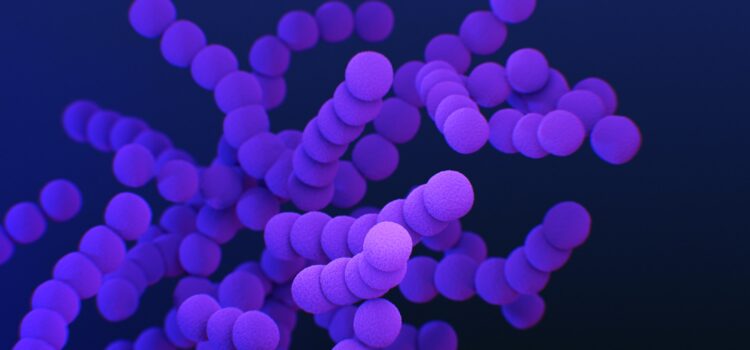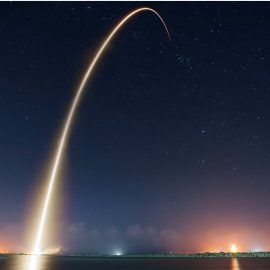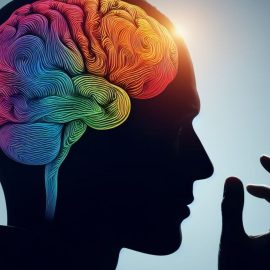

This article is an excerpt from the Shortform book guide to "I Contain Multitudes" by Ed Yong. Shortform has the world's best summaries and analyses of books you should be reading.
Like this article? Sign up for a free trial here.
What do microbes do? Why are they important? What is their evolutionary role?
When most people think of microbes, the first things that come to mind are disease-causing germs or healthy probiotic yogurts. In I Contain Multitudes, Ed Yong explains what microbes do and how most of us are largely unaware of the trillions of microbes on every surface and throughout our bodies.
Read on to learn how Ed Yong defines what microbes do, why they’re important, and their significance to evolution.
What Do Microbes Do?
According to science journalist Ed Yong, to understand what microbes do for humans and their role in the animal world today, it’s important to understand the definition of microbes and their significance in the evolution of living organisms.
In this article, we’ll explore each of these topics, based on the explanations in Ed Yong’s book I Contain Multitudes.
What Are They?
Before we explain exactly what microbes do, let’s start by defining what they are. “Microbe” is a catch-all term for microorganisms, living things that are too small to see with the naked eye. Yong explains that microbes exist in many forms, broadly categorized as bacteria, fungi, and viruses.
(Shortform note: Protozoa is another scientific category of microbes that Yong doesn’t discuss in detail. Protozoa are single-celled organisms that are sometimes parasitic and cause diseases such as malaria.)
Within these categories, other terms are often used to indicate a microbe’s function. For example, pathogens are disease-causing microbes, probiotics are those that produce a health benefit, and bacteriophages (also known as phages) are viruses that eat bacteria.
Although pathogens are generally considered “bad” microbes, Yong asserts that microbes aren’t inherently bad or good. In his analogy of individual people as ecosystems of interacting microbes, Yong compares pathogens to invasive species—plants or animals that have a negative impact when they’re introduced into a new environment without any natural predators to control their population. Likewise, instead of painting microbes in broad strokes, he argues that it’s important to consider what microbes do to humans based on the context in which they cause us harm.
(Shortform note: In The Sixth Extinction, Elizabeth Kolbert reinforces Yong’s nuanced view of pathogens by explaining that some pathogens may be harmless in one context but deadly in another where people, plants, or animals haven’t evolved immune defenses for a particular microbe. For example, an introduced fungus killed almost all of the American chestnut trees (about 4 billion in total) in the Northeastern US in the early 1900s, nearly wiping out a long-lived species that dominated the forests in previous centuries. However, the same pathogen is harmless to Asian species of chestnut trees.)
Here’s an example of what microbes can do in various contexts: Many microbes in our gastrointestinal tract are vital to our immune system and digestion, but they can also cause a fatal condition called sepsis if they enter the bloodstream. The mucus linings in our stomach are one of the main barriers that keep microbes in the right place.
(Shortform note: Because of this important role of mucus membranes, Stephen R. Gundry’s The Plant Paradox warns against regularly using non-steroidal anti-inflammatory drugs (like ibuprofen and aspirin), which damage our protective mucus layers and allow microbes to pass through.)
History and Functions
So, how did microbes co-evolve with other species and what did they do to create they conditions for life? For billions of years, they were the only living organisms on the planet. To put this in perspective, Yong condenses the earth’s history into one calendar year. On this time scale, microbes entered the scene in March, plants and sea creatures appeared in November, and humans have only been around for the last 30 minutes at most.
(Shortform note: David Attenborough first introduced this concept of the “cosmic calendar” in his television series Life on Earth to help people conceptualize the evolutionary history of the universe. Since then, it’s become a common tool for expressing the relatively small period of time that humans have been around. Although Yong implies that the cosmic calendar begins when Earth formed about 4.5 billion years ago, the calendar actually condenses the 14 billion years of the universe’s history into one year. On this time scale, each month is just over 1 billion years, and a human lifespan of 75 years is only 0.16 seconds.)
Yong emphasizes that not only have microbes been around much longer than any other life form on Earth, microbes actually created the conditions for other living organisms to evolve. Bacteria are responsible for breaking down organic matter and converting nutrients such as carbon and nitrogen into forms that plants and animals can use. Bacteria were also the first organisms to photosynthesize, the process by which plants harness energy from the sun and produce oxygen as a byproduct. Photosynthesis by early bacteria created the oxygenated atmosphere that enabled the animal kingdom to come into existence.
(Shortform note: Since microbes were the bedrock of life on Earth, researchers are studying the ones that live in extreme environments (known as extremophiles) to learn what microbes can do in terms of the potential for microbial life on Mars. The extremophiles live in places like permafrost, hot springs, and acidic lakes. If scientists recreate the harsh conditions of Mars and prove that microbes can survive there, this would be compelling evidence for potential past and current life on Mars.)
All life forms on Earth co-evolved with microbes, and without bacteria and their ability to decompose organic matter, Earth would quickly pile up with waste. In addition, the food chain would collapse because it relies on the soil nutrients that decomposition of organic matter produces. (Shortform note: Other partners in decomposition include earthworms, fungi, and scavengers like cockroaches and vultures. These organisms are the ultimate composters, working together to decompose the things most people find unappealing, like dead organisms and feces, into their basic elements to then integrate into new life forms.)
Symbiosis With Animals
Aside from their relationship with humans, what do microbes do for the animal kingdom? Yong points out that while animals depend on them in many ways, bacteria and other microbes also rely on host organisms for suitable habitats, food, and opportunities to reproduce. As a result, they’ve evolved in diverse ways to find niches in every species of the animal kingdom, which includes humans. The human body alone contains about 500 times more microbe genes than human genes. Based on the latest estimates (which often vary), about half of the cells in the human body are microbial.
(Shortform note: Microbes also have hosts throughout the plant kingdom, but Yong’s book focuses on their relationship with animals. Microbes are so ubiquitous on Earth that each teaspoon of soil contains as many microbes as there are people in Africa, and the oceans contain more than 100 million times more bacteria than the number of stars in the entire universe.)

———End of Preview———
Like what you just read? Read the rest of the world's best book summary and analysis of Ed Yong's "I Contain Multitudes" at Shortform.
Here's what you'll find in our full I Contain Multitudes summary:
- A deep dive into the mysterious and fascinating world of microbes
- How commercial probiotics have oversold health benefits
- How modern sanitation practices are harming us






